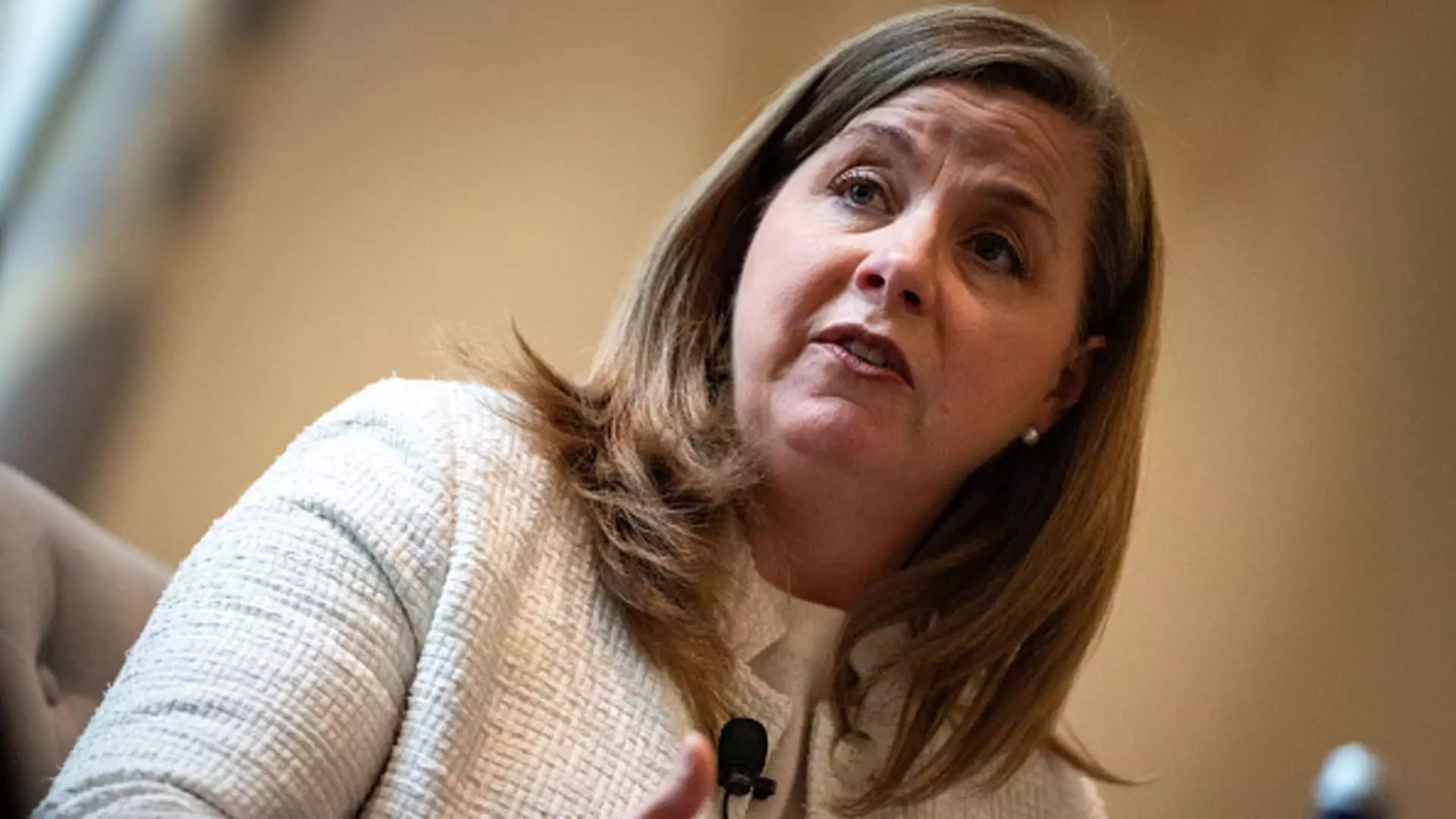As the global economy navigates through fluctuating inflation rates and evolving monetary policies, Federal Reserve Governor Michelle Bowman’s recent remarks provide a pivotal perspective on the current state of affairs. On a Thursday address to bankers in California, Bowman endorsed the Federal Reserve’s decision to implement interest rate cuts, yet she conveyed reservations about further reductions in the near future. Her comments reflect the central bank’s dual mandate to promote maximum employment and stable prices, highlighting the fine balance that officials must strike in their decision-making processes.
Bowman’s support for the December quarter-percentage point reduction indicates her acknowledgment of the economic environment’s complexities. However, she clearly stated her belief that this adjustment should mark the conclusion of the current cycle of reductions. This view stems from her concerns that inflation is lingering “uncomfortably above” the Fed’s 2% target, suggesting that while some progress has been made, vigilance remains necessary.
The dialogue surrounding inflation is critical to understanding Bowman’s stance. The Fed’s preferred inflation metric registered at 2.4% in November, but this figure elevated to 2.8% when excluding volatile food and energy prices. This core measure is considered by economists as a more reliable long-term indicator of inflation trends. Bowman’s observation that core inflation remains above the 2% target reveals a complex economic reality; even with indications of a decline in overall inflation rates during 2023, the progress appears stagnant.
The juxtaposition of Bowman’s caution against the backdrop of recent FOMC meeting minutes illuminates a broader debate within the Federal Reserve. Many committee members share concerns regarding the inflation trajectory, albeit with a more optimistic outlook, forecasting a return to the target by 2027. This divergence of opinions highlights the nuanced landscape in which policymakers operate, constantly weighing various economic indicators against potential risks.
Interestingly, Bowman’s perspective stands in contrast to that of other Fed officials this week. For instance, Governor Christopher Waller presented a more upbeat assessment during a speech in Paris, suggesting that observed prices are moderating and advocating for further rate reductions. This divergence underlines the complexity of the Fed’s internal discourse. Bowman is often characterized as a hawkish member of the committee, favoring aggressive strategies to combat inflation, while other members exhibit a penchant for a more lenient approach.
The variance in viewpoints demonstrates the delicate balancing act faced by the Federal Reserve. It must contend with external pressures while also maintaining a proactive stance amidst changing market dynamics. This variety of opinions within the FOMC is indicative of the unpredictability of economic conditions, requiring continuous monitoring and re-evaluation of strategies.
As Bowman addressed her colleagues, she alluded to the potential impacts of the incoming Trump administration on economic policies, cautioning against “prejudging” decisions on issues such as tariffs and immigration. Such external factors play a significant role in determining economic stability and growth, and they necessitate careful consideration in conjunction with domestic monetary policy.
Bowman’s emphasis on fostering a cautious and gradual approach to policy adjustments reinforces the essence of her message: maintaining economic stability is paramount. Her acknowledgment of strong stock market performance and rising Treasury yields serves as a reminder that while lower interest rates can stimulate growth, they may also lead to excessive risk-taking behaviors in financial markets. Striking the right balance in monetary policy is essential to mitigate inflation risks while fostering economic growth.
Governor Michelle Bowman’s insights reflect the Federal Reserve’s commitment to navigating the intricate landscape of economic data and monetary policy. While she supports the recent interest rate cuts, her caution against further reductions is deeply rooted in the persistent challenges posed by inflation. As various committee members express differing perspectives, it is clear that the path ahead requires careful deliberation and adaptability. Federal Reserve officials must remain vigilant, as the evolution of economic indicators and geopolitical factors will invariably shape the decisions that lie ahead. Balancing these considerations is crucial for the central bank as it endeavors to fulfill its mandate in these uncertain times.

